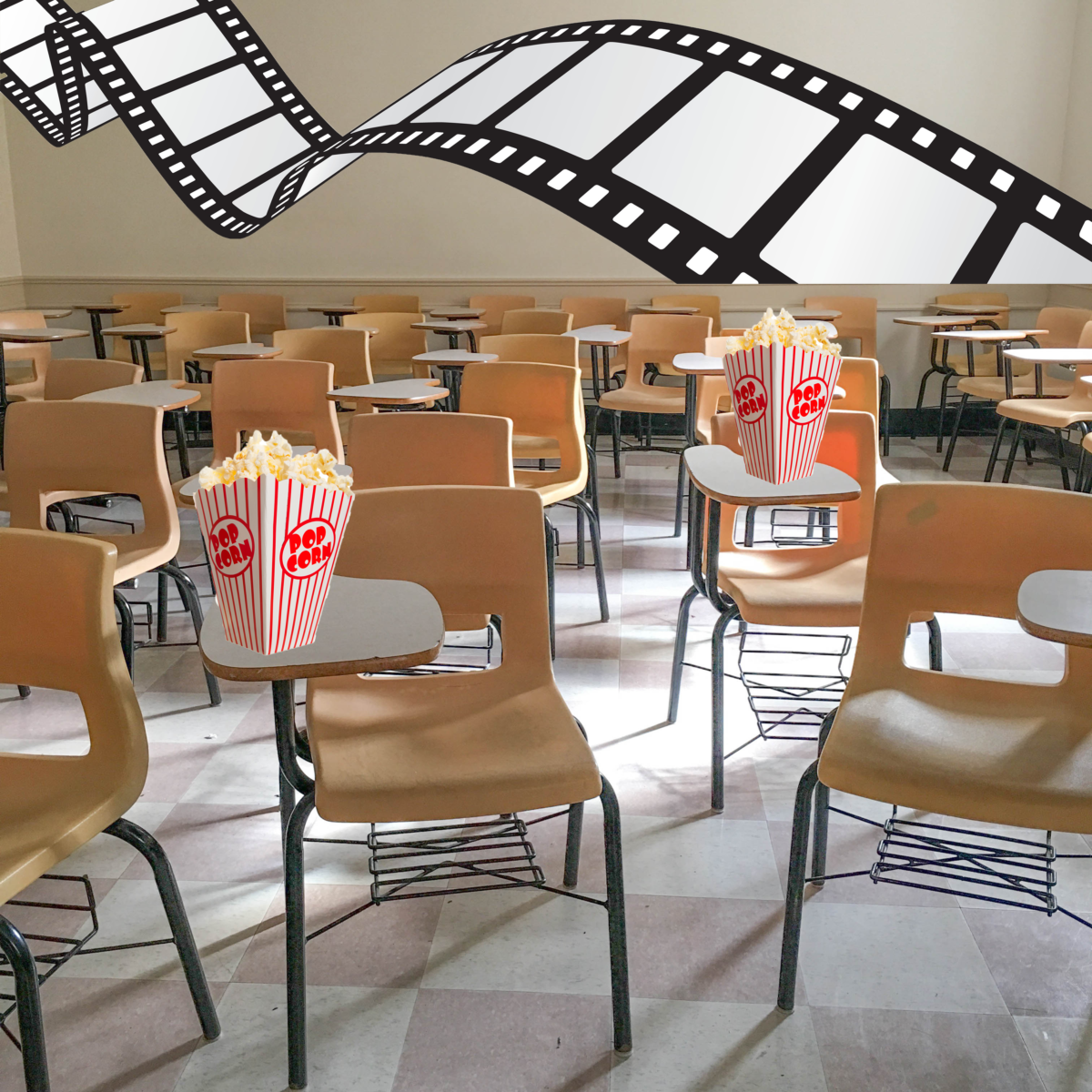
Flash back to elementary school: the teacher wheels a dusty TV cart into the room, takes a VHS tape out of its case, and pops it into the player. The lights go out, and the classroom falls silent in a matter of seconds.
It’s movie day.
But does film have a place in a university classroom?
Third-year anthropology major Marie Thérèse says professors should only show movies if they’re relevant to course material.
“I think that one movie lesson is fine for a semester, if it has to do with the subject. I have had profs do three or more movies, and that’s not okay with me. If a professor wants to discuss a movie, then have students watch it outside of class time,” said Thérèse.
Ayla Poitras, a third-year creative writing major, says that unless a student is enrolled in a film class, watching movies during class is a waste of time and tuition.
“If the entire movie only has a section that’s two minutes long that explains the point that you need to make, then only use those two minutes,” said Poitras.
Poitras admits to skipping class when films are played.
“I’m dishing out a shit-tonne of money for a three hour long class when I could go pay $10 and go watch a movie that I actually enjoy over at Cineplex,” Poitras said.
But just how much money are students shelling out to watch movies in class? A full-time Canadian St. Thomas student pays $591.39 per three credit hour course. If a student’s three credit hour course runs twice a week, they’ll be paying $22.75 per class this semester.
,
Acting chair of the Criminology Department, Dawne Clarke, thinks the time and money is worth it.
Clarke developed her first crime and film course around 2007. Her goal was to help students understand abstract and complex ideas using movies. She went on to develop a seminar course a few years ago.
“I design my courses around the films. There’s lots of really good material to draw from to make the connections, but…you have to be careful,” Clarke said. “Am I showing the film because I’m trying to enhance learning, or am I showing the film because I’m really tired today and I just don’t feel like teaching?”
Clarke has dozens of films in her criminology collection for teaching, as well as another collection at home for a grand total of around 500 movies.
“It’s harder, I would think, in some instances to use films than it would be in others. In criminology it’s easy because one of biggest genres of film is the crime film and then all of the sort of sub-sections.”
Clarke’s love of film began when she was a child, and the only way to see a movie was to go to a theatre or to watch it on television. She says that watching the 1939 version of The Wizard of Oz on TV was better than Christmas.
“Films are almost like time machines. You can go into the past, you can go into the future, places I might never get to see in my lifetime, but I can see them through film,” Clarke said. “Films give us an opportunity to go into spaces that maybe we wouldn’t have gone into before. That’s what drives me – and I simply just love movies.”
Clarke sees film as more than just a hobby or a teaching tool. She describes movies as an “equalizer.” Film provides a shared understanding that everyone can relate to; everyone watches movies.
“I try not to come in [to the classroom] and think that I know everything and that they, [the students], are there just to sit and listen to me and watch me do my job. I like to think that I’m going in there and acknowledging that the knowledge they have and their life experiences are important.”
